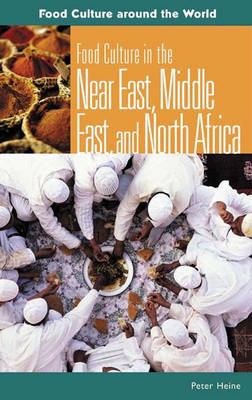Food Culture around the World
1 total work
Food Culture in the Near East, Middle East, and North Africa
by Peter Heine
Published 30 December 2004
The similar cuisines of the Near East, Middle East, and North Africa stem from ancient cultures and variable climates, ranging from Mediterranean to desert. The major monotheistic religions developed in the Middle East, and students and other readers will learn how religious strictures on food and drink continue to play an important role in eating habits there today for Muslims, Jews, and Christians. Most of the population in the regions is Arab, and therefore the emphasis in this volume is mainly on the Arab Muslim food cultures. The impact of colonialism, globalization, and modernization of the foodways is also discussed in the topical chapters.
This thorough overview provides huge insight into the lives of everyday people in the regions through their food culture. One chapter describes the major foodstuffs and how they are used. Another discusses gender roles and cooking, the use of cookbooks, and details the typical kitchen and its contents, from appliances to utensils. A chapter on typical meals shows the daily rituals of the various peoples. The Eating Out chapter provides a fascinating look at the workings and décor of small, traditional restaurants, the popularity of picnics, and more. Next, food in the context of religious holidays and life-cycle celebrations is discussed. Finally, traditional folk and modern beliefs about diet and health round out the coverage.
This thorough overview provides huge insight into the lives of everyday people in the regions through their food culture. One chapter describes the major foodstuffs and how they are used. Another discusses gender roles and cooking, the use of cookbooks, and details the typical kitchen and its contents, from appliances to utensils. A chapter on typical meals shows the daily rituals of the various peoples. The Eating Out chapter provides a fascinating look at the workings and décor of small, traditional restaurants, the popularity of picnics, and more. Next, food in the context of religious holidays and life-cycle celebrations is discussed. Finally, traditional folk and modern beliefs about diet and health round out the coverage.
